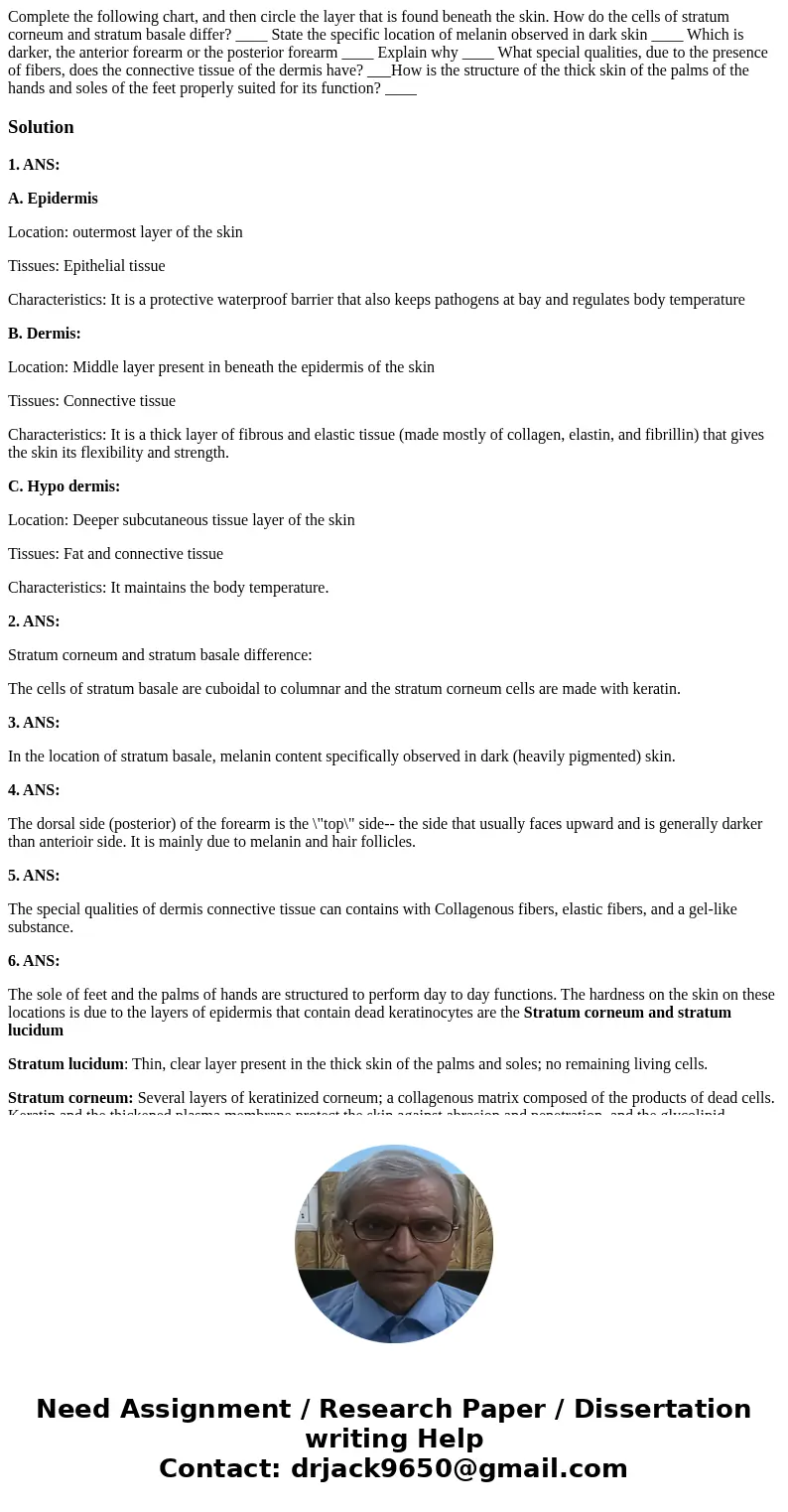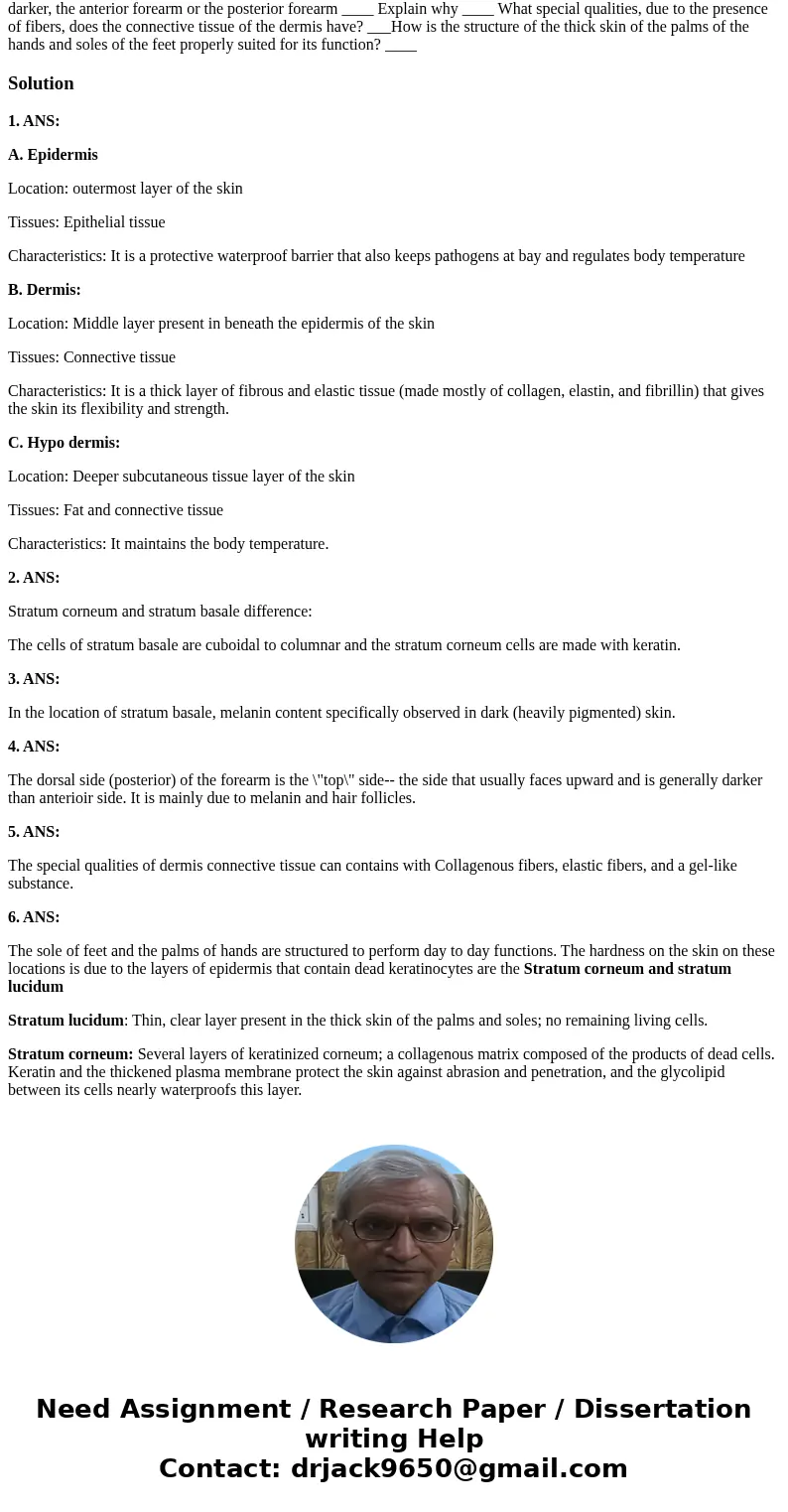Complete the following chart and then circle the layer that
Solution
1. ANS:
A. Epidermis
Location: outermost layer of the skin
Tissues: Epithelial tissue
Characteristics: It is a protective waterproof barrier that also keeps pathogens at bay and regulates body temperature
B. Dermis:
Location: Middle layer present in beneath the epidermis of the skin
Tissues: Connective tissue
Characteristics: It is a thick layer of fibrous and elastic tissue (made mostly of collagen, elastin, and fibrillin) that gives the skin its flexibility and strength.
C. Hypo dermis:
Location: Deeper subcutaneous tissue layer of the skin
Tissues: Fat and connective tissue
Characteristics: It maintains the body temperature.
2. ANS:
Stratum corneum and stratum basale difference:
The cells of stratum basale are cuboidal to columnar and the stratum corneum cells are made with keratin.
3. ANS:
In the location of stratum basale, melanin content specifically observed in dark (heavily pigmented) skin.
4. ANS:
The dorsal side (posterior) of the forearm is the \"top\" side-- the side that usually faces upward and is generally darker than anterioir side. It is mainly due to melanin and hair follicles.
5. ANS:
The special qualities of dermis connective tissue can contains with Collagenous fibers, elastic fibers, and a gel-like substance.
6. ANS:
The sole of feet and the palms of hands are structured to perform day to day functions. The hardness on the skin on these locations is due to the layers of epidermis that contain dead keratinocytes are the Stratum corneum and stratum lucidum
Stratum lucidum: Thin, clear layer present in the thick skin of the palms and soles; no remaining living cells.
Stratum corneum: Several layers of keratinized corneum; a collagenous matrix composed of the products of dead cells. Keratin and the thickened plasma membrane protect the skin against abrasion and penetration, and the glycolipid between its cells nearly waterproofs this layer.


 Homework Sourse
Homework Sourse